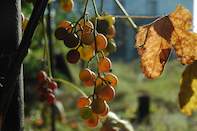
Raisins SA is a knowledge hub that provides extensive information on the past and current raisin industry, production, and local and international markets.
Raisins SA is dedicated to the dissemination of important information regarding crop management, estimated trends, export statistics and new production opportunities.
The first raisins were produced in the 18th century when European settlers ventured into the production of dried grapes and other fruits. During this time, it was established that certain cultivars of grapes were better suited to drying, and various new types were imported into the country, such as the now-famous sultana.
After the dismantling of apartheid, international markets reopened and the raisin industry adopted free-market principles. As a result, the production of raisins expanded from 34 856 tons in 1994 to an estimated 65 589 tons in 2017 and a projected production volume of 74,830 tons in the coming years’ marketing season.
South African raisins are known for its excellent quality and has a long history of supplying customers across the globe. Quality has always been the driving force of the industry, and there are strict quality standards that have been introduced with which every exporter must comply. These standards are enforced by means of inspection of every export consignment leaving our shores by the Perishable Produce Export Certification Board (PPECB), acting on behalf of the South African Department of Agriculture.
South Africa is listed as the 5th largest producer of raisins worldwide. The industry has grown over the recent years, and this growth trajectory is expected to continue over the short- to medium term. South Africa is by far the largest producer of raisins in the southern hemisphere; and in terms of exports, the country is also listed as the 5th largest raisin exporter worldwide.
 Raisins are dried grape berries and the word raisin is, in fact, the French word for grape. Raisins are produced commercially, by drying har...
Raisins are dried grape berries and the word raisin is, in fact, the French word for grape. Raisins are produced commercially, by drying har...